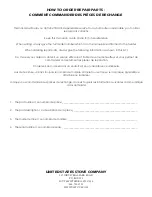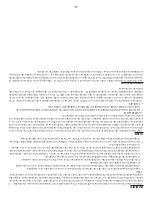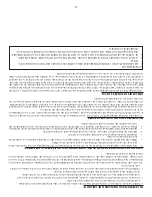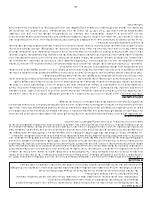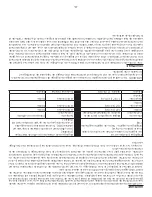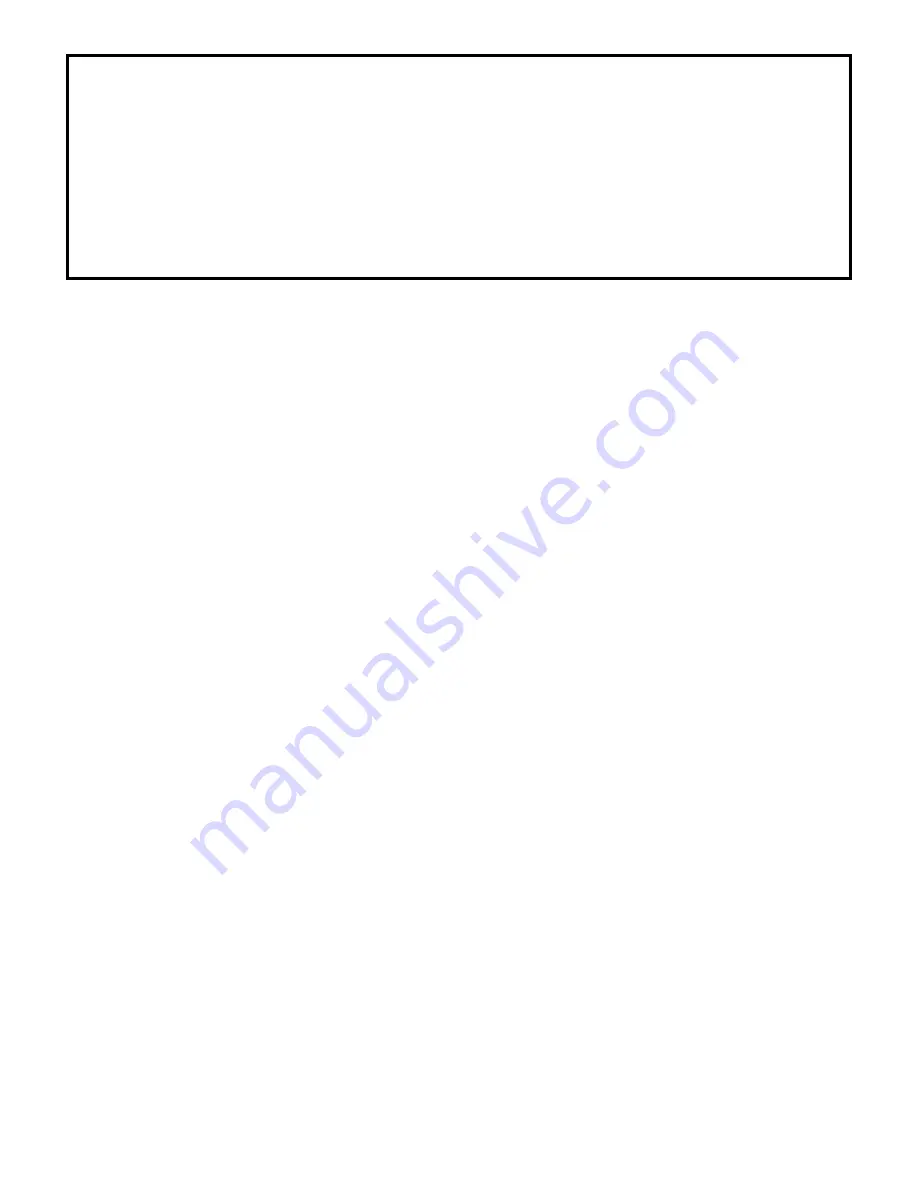
-15-
WARNINGS
• NEVER OVERFIRE YOUR STOVE. IF ANY PART OF THE STOVE STARTS TO GLOW RED, OVER
FIRING IS HAPPENING. READJUST THE AIR INTAKE CONTROL AT A LOWER SETTING.
• THE INSTALLATION OF A LOG CRADLE or GRATES IS NOT RECOMMENDED IN YOUR WOOD
STOVE. BUILD FIRE DIRECTLY ON FIREBRICK.
• NEVER PUT WOOD ABOVE THE FIREBRICK LINING OF THE FIREBOX.
•
ATTEMPTS TO ACHIEVE HEAT OUTPUT RATES THAT EXCEED HEATER DESIGN
SPECIFICATIONS CAN RESULT IN PERMANENT DAMAGE TO THE HEATER
EFFICIENCY
Efficiencies can be based on either the lower heating value (LHV) or the higher heating value (HHV) of the fuel. The lower heating value
is when water leaves the combustion process as a vapor, in the case of woodstoves the moisture in the wood being burned leaves the stove
as a vapor. The higher heating value is when water leaves the combustion process completely condensed. In the case of woodstoves this
would assume the exhaust gases are room temperature when leaving the system, and therefore calculations using this heating value consider
the heat going up the chimney as lost energy. Therefore, efficiency calculated using the lower heating value of wood will be higher than
efficiency calculated using the higher heating value. In the United States all woodstove efficiencies should be calculated using the higher
heating value. The best way to achieve optimum efficiencies is to learn the burn characteristic of you appliance and burn well-seasoned
wood. Higher burn rates are not always the best heating burn rates; after a good fire is established a lower burn rate may be a better option
for efficient heating. A lower burn rate slows the flow of usable heat out of the home through the chimney, and it also consumes less wood.
VISIBLE SMOKE
The amount of visible smoke being produced can be an effective method of determining how efficiently the combustion process is taking
place at the given settings. Visible smoke consist of unburned fuel and moisture leaving your stove. Learn to adjust the air settings of your
specific unit to produce the smallest amount of visible smoke. Wood that has not been seasoned properly and has a high wood moisture
content will produce excess visible smoke and burn poorly.
RELOADING
Once you have obtained a good bed of embers, you should reload the unit. In order to do so, open the air controls to maximum a few
seconds prior to opening the stove’s door. Then proceed by opening the door very slowly; open it one or two inches for 5 to 10 seconds,
before opening it completely to increase the draft and thus eliminate the smoke which is stagnant in a state of slow combustion in the stove.
Then bring the red embers to the front of the stove and reload the unit. For optimal operation of your wood stove, we recommend you to
operate it with a wood load approximately equivalent to the height of fire bricks. It is important to note that wood combustion consumes
ambient oxygen in the room .In the case of negative pressure, it is a good idea to allow fresh air in the room, either by opening a window
slightly or by installing a fresh air intake system on an outside wall.
Creosote - Formation and Need for Removal - When wood is burned slowly, it produces tar and other organic vapors, which combine with
expelled moisture to form creosote. The creosote vapors condense in the relatively cool chimney flue of a slow-burning fire. As a result,
creosote residue accumulates on the flue lining. When ignited this creosote makes an extremely hot fire. The chimney connector and
chimney should be inspected at least once every two months during the heating season to determine if a creosote build-up has occurred.
If creosote has accumulated (3mm or more), it should be removed to reduce the risk of a chimney fire. We strongly recommend that
you install a magnetic thermometer on your smoke exhaust pipe, approximately 18” above the stove. This thermometer will indicate the
temperature of your gas exhaust fumes within the smoke exhaust system. The ideal temperature for these gases is somewhere between
275°F and 500°F. Below these temperatures, the build-up of creosote is promoted. Above 500 degrees, heat is wasted since a too large
quantity is lost into the atmosphere.
TO PREVENT CREOSOTE BUILD UP
•
Always burn dry wood. This allows clean burns and higher chimney temperatures, therefore less creosote deposit.
•
Leave the air control full open for about 5 min. every time you reload the stove to bring it back to proper operating temperatures. The
secondary combustion can only take place if the firebox is hot enough.
•
Always check for creosote deposit once every two months and have your chimney cleaned at least once a year.
If a chimney or creosote fire occurs, close all dampers immediately. Wait for the fire to go out and the heater to cool, then inspect the chimney
for damage. If no damage results, perform a chimney cleaning to ensure there is no more creosote deposits remaining in the chimney.






















